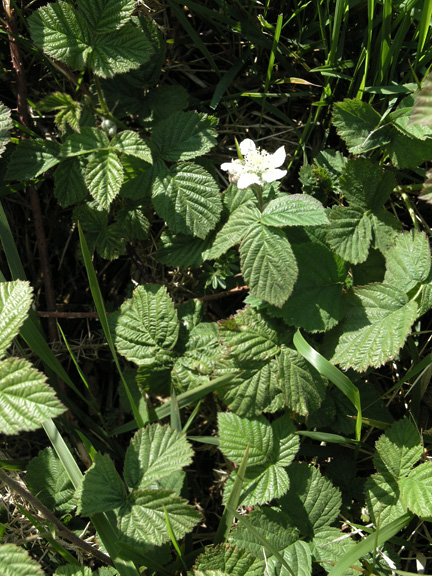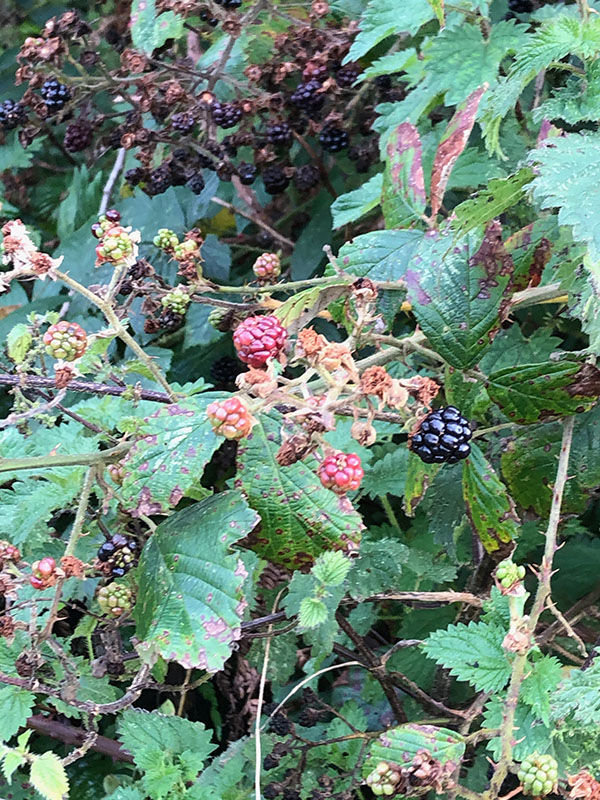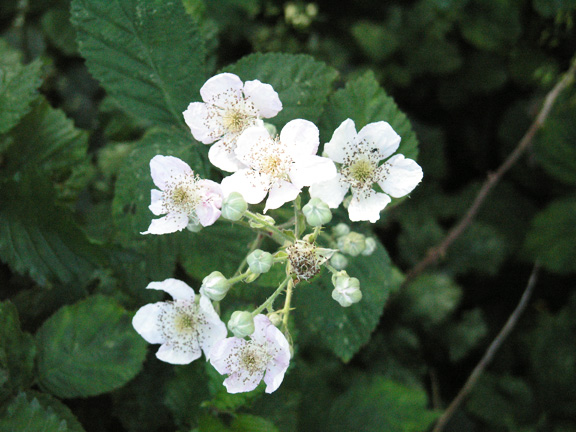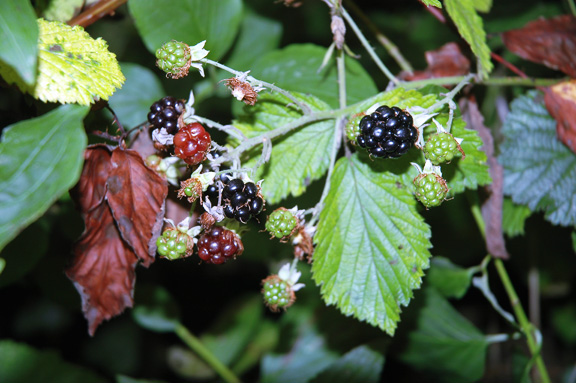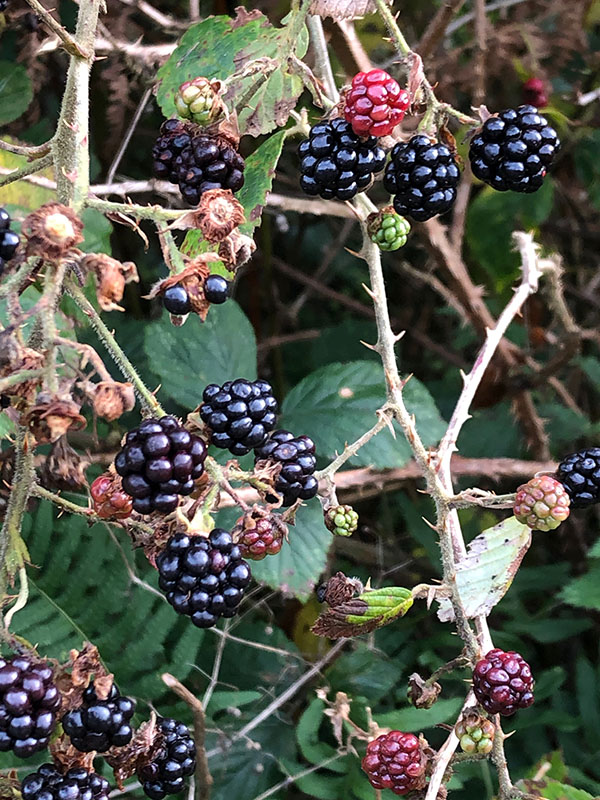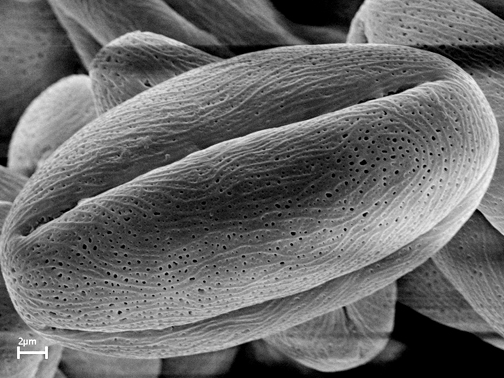| General Description | Deciduous to semi-evergreen large vine like shrub with green, palmately compound leaves, with 3 - 5 heavily veined leaflets that turn green-yellow in autumn. Clusters of white five petaled flowers in summer and clusters of blackberries in autumns. |
| ID Characteristic | Has a cluster of deep purple/black many drupelet fruit. It is a large massing plant with arching canes covered in thorns. Green leaves that are palmately compound with clusters of white/pink five petaled flowers. |
| Shape | Vertical, mound shape, with procumbent canes. |
| Landscape | Principally used as a natural plant in landscape restoration projects and to attract wildlife. There are many cultivars that are better suited to fruit production in the garden compared to the species. |
| Propagation | Tip layer in the summer when the plant is actively growing. Select young vigorous shoots which grow in an arch up and away from the central part of the plant and place the tip in a 10 cm hole, with about 10 cm of the tip extending out the far side of the hole: backfill. Rooting will occur in the autumn, sever from the parent plant and transfer in the spring.
The seed require stratification at 3°C for 30 days and are best sown in early autumn using a cold frame. They should be planted out as early as possible the following year when they are large enough to handle. |
| Cultivation | R. fruticosus will grow in partial to full shade and tolerates a wide variety of soils; however it flourishes in full sun and well drained, moist soil, with a high organic content. It has a very deep root system and is drought tolerant once established. Plant in early spring before the young canes break dormancy. |
| Pests | Japanese beetles and verticillium wilt might be problematic. |
| Notable Specimens | Great Flat Lode, Redruth, United Kingdom. |
| Habitat | Found in disturbed areas, orchards, stream banks, farmlands, ditch banks, roadsides, woodlands, and hedgerows. |
| Bark/Stem Description | Young primocanes are green to light brown while floricanes are brown with exfoliating bark. |
| Flower/Leaf Bud Description | About 5 mm, green, coned shaped and glabrous. |
| Leaf Description | Palmately compound leaves with 3 - 5 heavily veined leaflets, orbicular, ovate, double serrate leaflets that are alternate. Deep green leaves that turn green-yellow in autumn. |
| Flower Description | Perfect flowers, 2-3 cm, with five petals that are white or pale pink, blooming from May to September. |
| Fruit Description | Blackberries are a succulent, large fruit that is aggregate with a head of many drupelets, each containing one seed. Drupelets narrowly to broadly D-shaped or rounded triangular ripening to purple-black from green. |
| Colour Description | The flowers are white to pale pink, young bark is green to light brown and older bark is dark brown. Leaves are deep green and turn a green-yellow colour in the autumn. |
| Texture Description | The plant has a coarse texture. |
